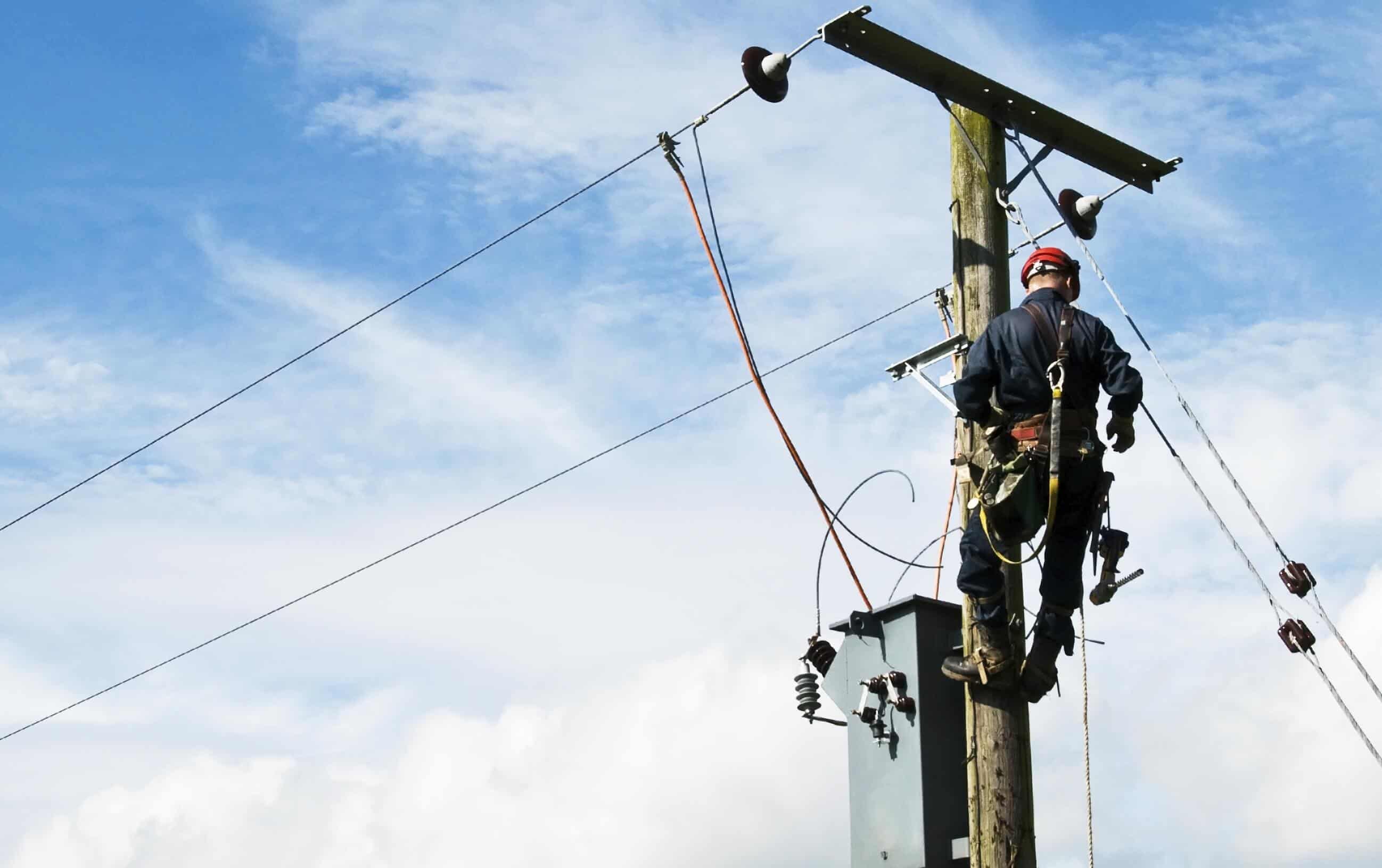 A commonly-accepted view about Smart Grid is that it requires a single, high-capacity network to support two-way communications with smart devices and applications. But can a single technology provide this? Tait Principal Consultant, Dr. Jan Noordhof, argues that the answer is ‘No’.
A commonly-accepted view about Smart Grid is that it requires a single, high-capacity network to support two-way communications with smart devices and applications. But can a single technology provide this? Tait Principal Consultant, Dr. Jan Noordhof, argues that the answer is ‘No’.
Let’s consider the jam that utilities around the world find themselves in. Demand for electricity is increasing faster than they can supply it. At the same time there is political and consumer pressure to cut the cost of power.
However, a great deal of utilities’ infrastructure is ageing and requires an urgent upgrade. A symptom of this is the occurrence of major power outages which not only infuriate governments and users, but can lead to stiff penalties for failing to meet SAIDI (System Average Interruption Duration Index) targets. Add to this increasing regulatory pressure, green initiatives, security concerns and distributed generation.
With the strain on their cash flow, utilities have limited room to manoeuvre in their investment planning. They must find smarter ways to deliver more power more efficiently, monitoring current assets, minimizing the risk of prolonged outages, deploying upgrades, and seeking new, profitable business. So where should they target their money?
You do not need to wait for a whole new broadband network for the benefits of Smart Grid.
Smart Grid looks like a way out. Not the whole solution, perhaps, but a definite path forward, with applications such as:
- smart metering (automatic metering infrastructure or AMI),
- smart substation automation,
- distribution automation (DA),
- fault isolation and restoration (FDIR) applications,
- CVR and VoltVar optimization,
- demand response (DR),
- micro-grid management,
- smart building automation.
These applications depend on connecting a large number of geographically distributed elements: generators, substations, energy storage systems, customer meters, etc. Smart elements exchange data in real time, enabling them to be monitored, integrated, configured, optimized and managed (or to manage themselves), all over IP. While initial interest in the Smart Grid is in DA applications, the overall concept extends all the way from generation to the household.
Potentially, the Smart Grid could improve efficiency, reduce cost, increase grid reliability, flexibility and manageability, and even drive new business with valuable new services such as providing home control of power use, electric vehicle charging, or smart buildings. Still, all of this promise hangs on an information and communications technology (ICT) infrastructure that is fast, reliable, flexible, secure and cost-effective.
Some experts suggest that the wireless IP bandwidth necessary to carry the Smart Grid communications can only be achieved through broadband (LTE or WiMAX). Visionary utilities should therefore invest now in a broadband communications ‘ring’ to bind all their present and future data and voice applications. However, in reality the price tag for a private broadband LTE infrastructure is likely to be fairly steep across the wide geographic area that utilities typically operate in. Furthermore spectrum regulations around the world vary as to whether utilities can count on blocks of frequencies being guaranteed for their exclusive use.
Moreover, it may not be needed straight away. Utilities already have communications assets that they can leverage: corporate IT computer networks that include WiFi, land mobile radio, and public cellular data applications. Private Broadband will undoubtedly become increasingly prominent in the technology mix that is the present and future of utilities communication allowing utilities to control reliability and coverage characteristics. But it is unlikely to replace all wireless communications, and to get immediate value out of Smart Grid applications it is not mandatory.
 Consider land mobile radio (LMR). Designed mainly for voice, it has great wide-area coverage and reliability, yet slim data rates (in the range of 5 -19.2Kbps). Distribution automation – a significant Smart Grid application that allows monitoring and control of distribution outstation assets such as pole top reclosures and capacitor banks – controls switches through small data messages of typically less than 1Kb. The question is, how many switches can be controlled over a single narrowband radio channel? Assuming each switch is controlled once in a 12-hour day, that the data message size is 1Kb and that the LMR data rate is 5Kb per second, simple idealized calculation tells you that 18,000 switches can be controlled each hour and hence 216,000 each day on a single LMR channel – a very useful number. The reality, of course, is that most utilities would not operate LMR in this way but would use a mix of polling and unsolicited traffic. Yet, even with these constraints, LMR still offers a significant number of control actions per day.
Consider land mobile radio (LMR). Designed mainly for voice, it has great wide-area coverage and reliability, yet slim data rates (in the range of 5 -19.2Kbps). Distribution automation – a significant Smart Grid application that allows monitoring and control of distribution outstation assets such as pole top reclosures and capacitor banks – controls switches through small data messages of typically less than 1Kb. The question is, how many switches can be controlled over a single narrowband radio channel? Assuming each switch is controlled once in a 12-hour day, that the data message size is 1Kb and that the LMR data rate is 5Kb per second, simple idealized calculation tells you that 18,000 switches can be controlled each hour and hence 216,000 each day on a single LMR channel – a very useful number. The reality, of course, is that most utilities would not operate LMR in this way but would use a mix of polling and unsolicited traffic. Yet, even with these constraints, LMR still offers a significant number of control actions per day.
The data rate for broadband is vastly superior, but it drops off in a steep curve as you get closer to its coverage boundary; for a typical 10+10 700MHz system, would approach 20-30km. At 10km from a broadband LTE site, you get about 3Mb per second, which allows you to control 10.8 million switches per hour and hence 129.6 million each day! Near 20km, this drops to 3.24 million switches. At the end of coverage this could drop to the theoretical minimum of 691,200. The catch, however, is coverage: LMR can stretch out five times as far as LTE and the data rate remains constant throughout.
How many switches would your utility need to control to get an early return out of distribution automation? The LMR figures are often more than sufficient. It is certainly less expensive to add a couple of dedicated data channels to your existing LMR sites than to roll out broadband to do the same work. On the other hand, another utility may have a completely different Smart Grid priority application, such as high-resolution streaming video that is capacity-constrained. LMR is not a contender here, but LTE is clearly a candidate.
The simple fact is that utilities are not all cut from the same cloth. They may be in the same line of business, but can vary widely in their communications requirements and priorities. To improve your commercial operations or to solve your most pressing business problems, you may identify different Smart Grid applications as priorities to be deployed over a mix of communication technologies. Weigh up capacity versus coverage, cost versus benefit, owned versus contracted to decide which technologies should host which applications. In short, utilities have options right now for the Smart Grid.
There is a smooth migration story here. Utilities have already invested in radio, particularly for voice, which is used in day-to-day and emergency response operations. Voice over wireless broadband (LTE/WiMAX) standards have not been agreed upon yet and are still several years away.
Utilities can start right now to improve their business with Smart Grid. You can leverage existing technologies such as LMR over a wide coverage area, and with a digital upgrade connect them into a private broadband deployment in dense population areas, which can grow over time.
A better strategy is to consider the options and create a mixture of the best wireless communications networks to reduce cost and increase regulatory compliance. Most modern digital LMR systems such as the Digital Mobile Radio (DMR) standard contain open interfaces allowing them to be linked into Broadband IP systems. This supports a unified approach that offers choice. Existing LMR is an immediate starting point especially over large coverage areas that extend into both rural and suburban territory. Private broadband may be an excellent choice for dense urban areas that have suitable geography.
 This article is taken from Connection Magazine, Edition 4. Connection is a collection of educational and thought-leading articles focusing on critical communications, wireless and radio technology.
This article is taken from Connection Magazine, Edition 4. Connection is a collection of educational and thought-leading articles focusing on critical communications, wireless and radio technology.
Share your views, comments and suggestions in the Tait Connection Magazine LinkedIn group.



